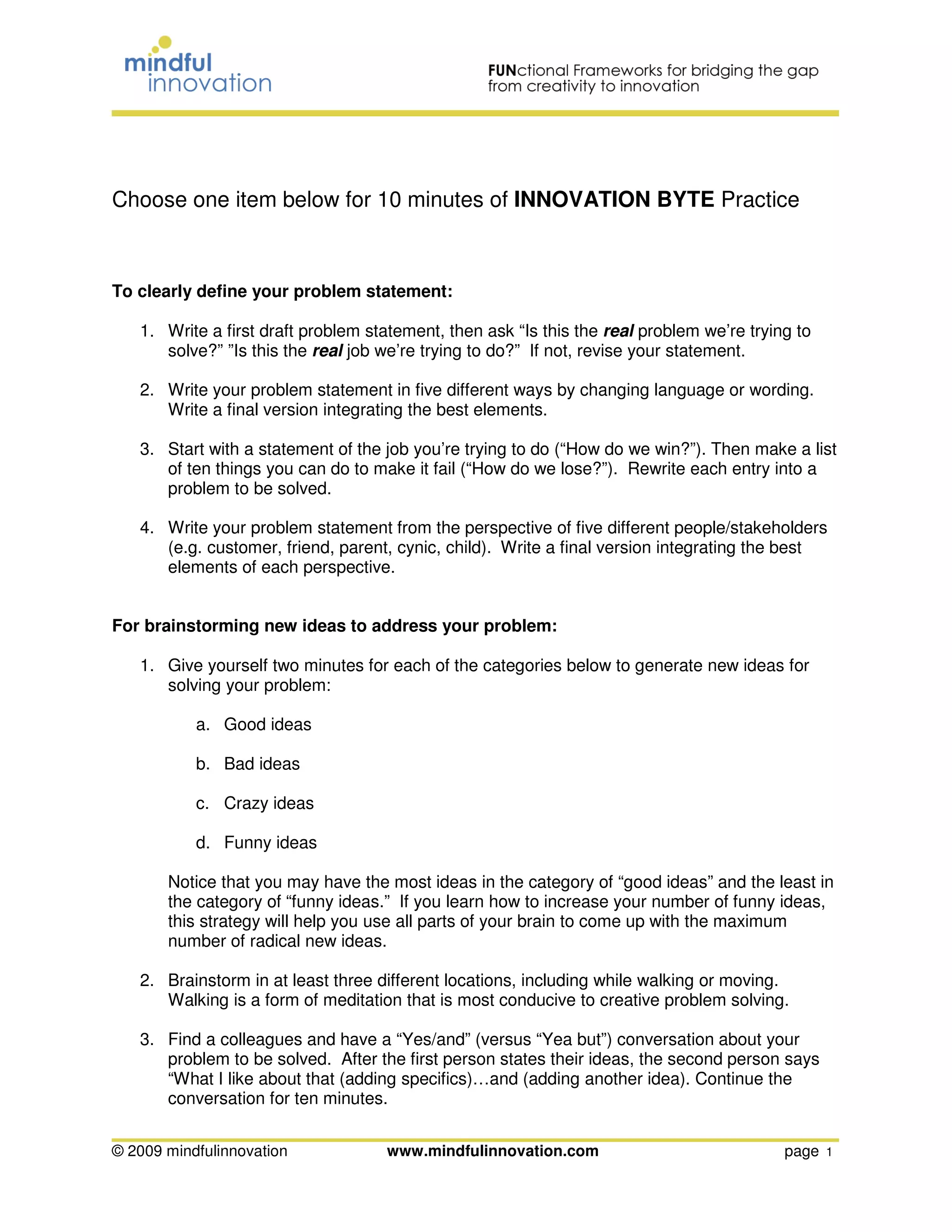The document provides a structured approach to defining problem statements and generating innovative solutions. It includes techniques for brainstorming ideas, evaluating value, and taking actionable steps, emphasizing a mindset that embraces failure as part of the learning process. The strategies involve various perspectives and encourage collaboration to enhance creativity.

